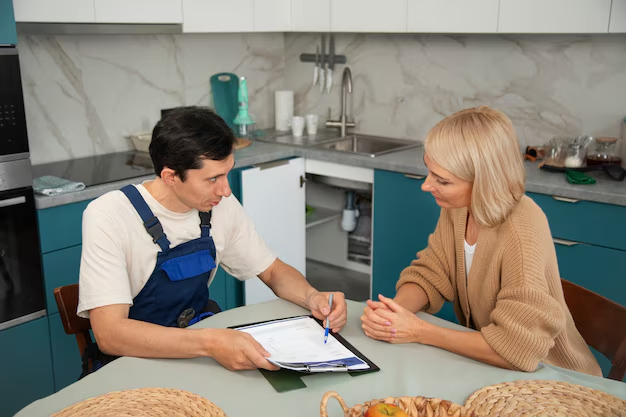Is Your Refrigerator Temperature Too Warm at 42 Degrees?
Keeping your refrigerator at the correct temperature is crucial for maintaining food safety and optimal freshness. When discussing whether a refrigerator temperature of 42 degrees Fahrenheit is acceptable, it's important to explore both the recommended guidelines and the practical implications. While this temperature might seem close to the ideal range, understanding its impact can help you decide if adjustments are needed for your appliance.
🥶 Recommended Refrigerator Temperatures
Refrigeration Basics
Refrigerators are designed to slow bacterial growth, thereby extending the shelf life of food. For effective refrigeration, temperatures need to be cold enough to slow spoilage but not so cold that they freeze perishable foods.
Ideal Temperature Range
The consensus among food safety experts is that refrigerators should be set between 35°F and 38°F (approximately 1.7°C to 3.3°C). This range effectively preserves food while minimizing spoilage risks. A refrigerator temperature of 42 degrees may be slightly too warm, potentially causing food to spoil faster.
❄️ Understanding Temperature Variations
Location and Zones
Refrigerator temperatures can vary within different areas of the appliance. Shelves closer to the door are often warmer than those in the back. Storing perishable items like milk or poultry in colder zones can help maintain their freshness.
External Influences
External factors such as opening the door frequently, warm room conditions, or storing hot food can lead to a rise in internal temperature. Regular checks and adjustments can mitigate these fluctuations.
🌡️ Implications of a 42-Degree Refrigerator
Food Safety Concerns
At 42 degrees, susceptible foods like dairy, eggs, and meat might not be safe for extended storage. Bacteria such as Listeria monocytogenes can grow even at this slightly higher temperature, posing potential health risks.
Shelf Life Reduction
While things like fruits and vegetables may tolerate a 42-degree setting, the overall shelf life of many items is reduced when compared to storage in the recommended range.
📏 Determining Your Refrigerator's Current Temperature
Built-in Thermostats
Most modern refrigerators have a built-in thermostat. However, these readings can sometimes be inaccurate or non-specific (e.g., settings of “colder” rather than exact temperatures).
Using a Refrigerator Thermometer
Investing in an appliance thermometer allows accurate measurement of your fridge’s temperature. Regular monitoring can ensure it stays in the ideal range.
🛠️ Adjusting Your Refrigerator to the Right Temperature
Finding the Temperature Control
Most refrigerators have a manual dial or digital display for temperature adjustment. Refer to your model’s manual for guidance on making precise changes.
Making Gradual Adjustments
Adjust the temperature setting in small increments and allow 24 hours for each change to stabilize before rechecking.
🕵️♀️ Troubleshooting Temperature Issues
Overloading the Fridge
A crowded refrigerator hampers air circulation, potentially leading to uneven temperatures. Ensure ample space between items for proper airflow.
Seal and Gasket Check
Worn-out door seals can allow cold air to escape. Inspect and replace faulty gaskets to maintain consistent cold temperatures.
Maintenance Tips
Regular cleaning of the condenser coils and ensuring the rear vent is unobstructed can enhance refrigerator efficiency and temperature accuracy.
🔍 When to Call a Professional
If your refrigerator struggles to maintain a consistent temperature despite adjustments and maintenance, it might be time to seek professional assistance. Issues like malfunctioning thermostats or cooling systems often require expert attention.
📋 Key Takeaways for Maintaining Optimal Refrigerator Temperatures
- Ideal Temperature: Aim for 35°F to 38°F for best food safety and shelf life.
- Regular Checks: Use a thermometer to monitor fridge temperature regularly.
- Temperature Adjustments: Make small controlled changes and allow settling time.
- Maintain and Repair: Keep your appliance well-maintained for optimal performance.
💡 Quick Reference Summary
| Issue | Best Action |
|---|---|
| 🥶 Temperature Set Too High | Adjust in small steps to 35°F-38°F and monitor. |
| 📏 Measurement Unclear | Use a calibrated appliance thermometer. |
| 🚪 Door Gasket Worn | Check and replace seals to prevent air leakage. |
| 🚫 Overcrowding | Ensure proper air circulation by reducing clutter. |
| 🔧 Mechanical Issues | Consult a technician for professional repair. |
By understanding and controlling your refrigerator's temperature, you can ensure the safety and longevity of your stored food. Taking proactive steps not only saves money but also enhances overall health and convenience in your kitchen environment.
